The new Porsche 911 hybrid has finished testing ahead of its reveal on 28 May.
Porsche has released the first official images of the debut electrified 911 as the global testing programme comes to an end, and confirmed that it has clocked a Nürburgring lap time of 7min 16.934sec.
That time, says Porsche, is 8.7sec faster "than the corresponding version of the predecessor model", but it didn't say specifically which model that refers to.
For reference, the current Porsche 911 Turbo S, with 641bhp and a 0-62mph time of just 2.6sec, clocked a lap time of 7min 17.3sec in 2021 - less than a half a second ahead of the new hybrid.
Details of the precise nature of the 911's hybrid system remain under wraps until the end of the month, but Frank Moser, who heads the 911 and 718 model lines, said it's an "innovative performance hybrid" system that gives "spontaneous response" and "makes the 911 even more dynamic".
"We left nothing to chance during development and tested the new 911 under all sorts of conditions all over the world," he added.
"From the freezing cold to scorching heat, as was the case during the final stages of testing in Dubai. Whether at a high drivetrain load in the demanding conditions of mountain passes or in the stop-and-go traffic of an urban environment, the new 911 has mastered even the most difficult challenges with aplomb."
During testing, said Moser, engineers and test drivers clocked up more than three million miles behind the wheel of the prototypes.
Due on sale by the end of the year, the hybrid will be added to the line-up as part of a mid-life facelift for the current 911; the ‘992.2’-generation car will receive a host of mid-life revisions, including subtly altered exterior styling, a reworked interior and updated six-cylinder petrol engines.
It is one of four new Porsche models arriving in 2024 – one of the German marque's busiest years on record for new product launches – alongside the new Panamera, Taycan and electric Macan.
The changes are intended to sustain the 911’s appeal through to 2027, when an all-new ninth-generation model will join the increasingly electrified Porsche line-up.
The most significant change to the 911 in its sixth decade of production, however, is the adoption of that unique petrol-electric hybrid system.
It combines a tuned version of Porsche’s turbocharged six-cylinder engine with a specially designed electric motor housed within the front axle assembly. The petrol engine provides drive to the rear wheels, while the electric motor drives the front wheels.


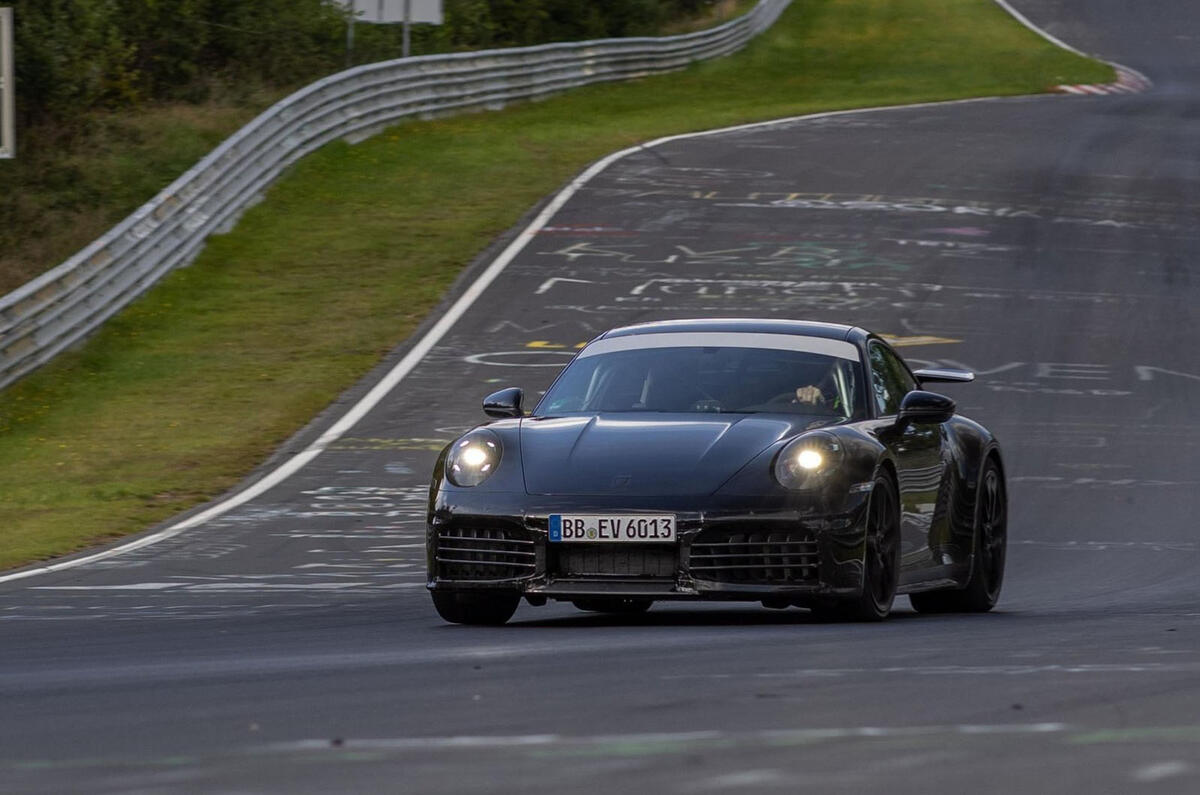




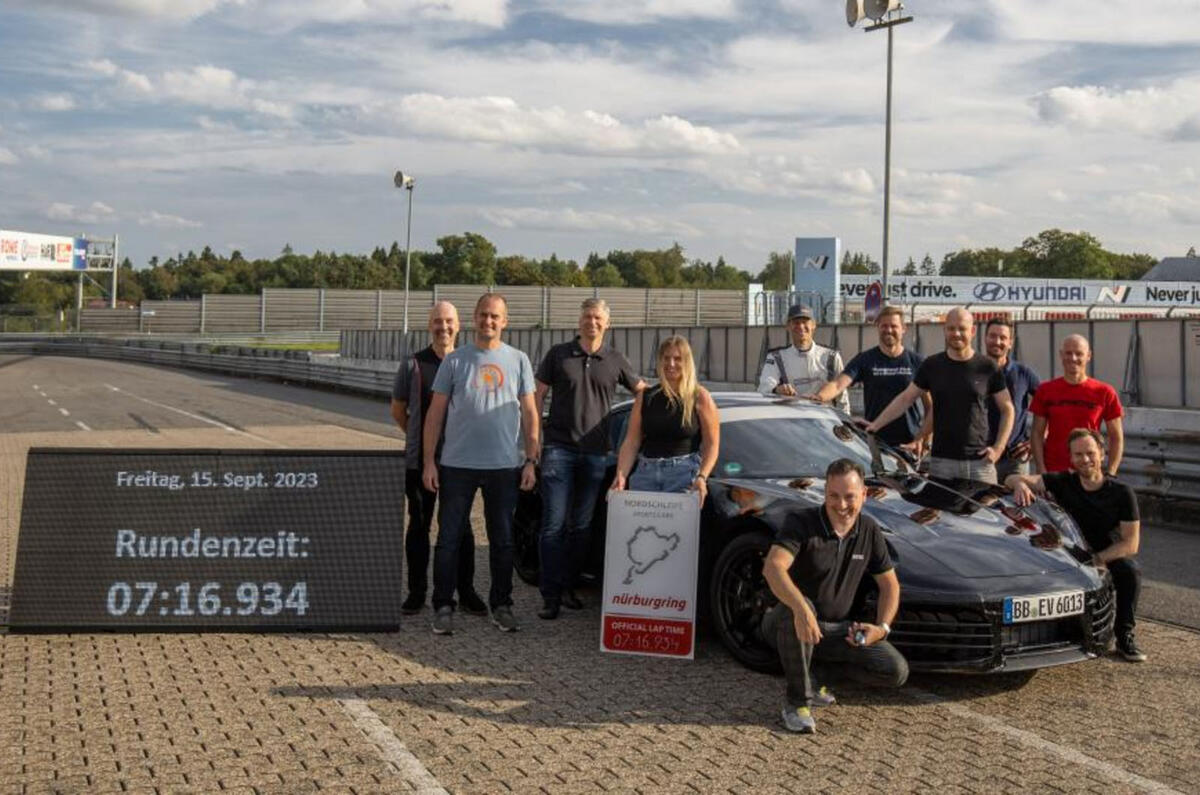
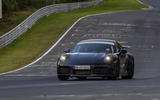








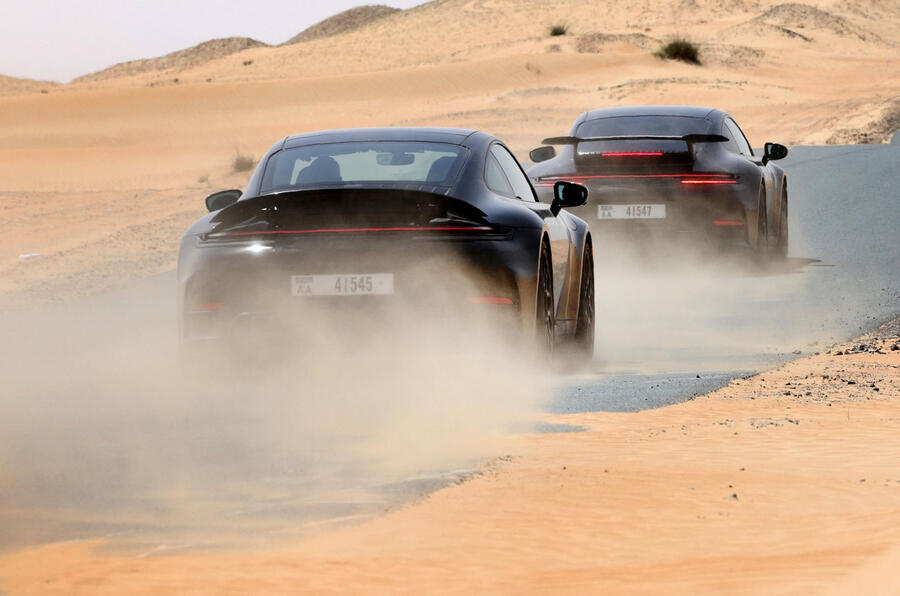
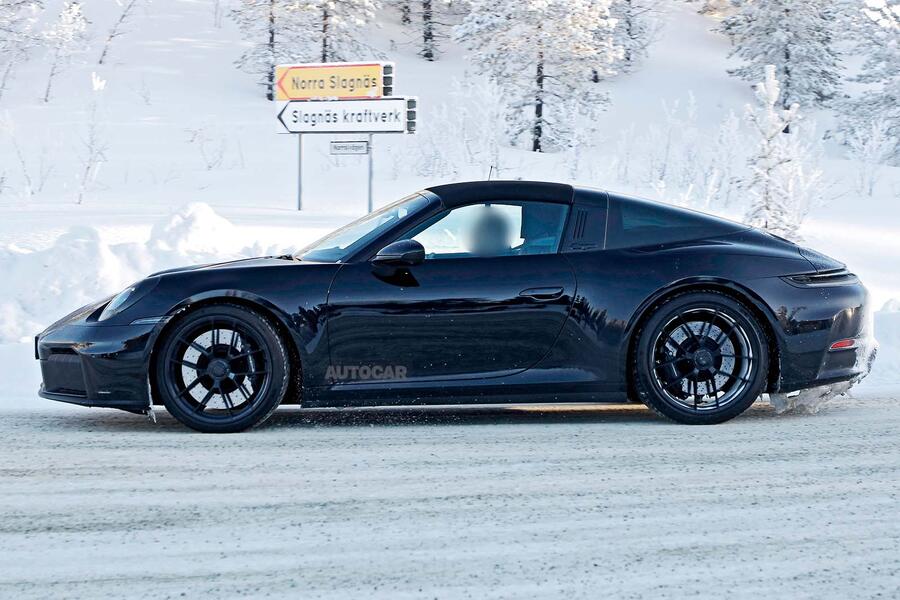
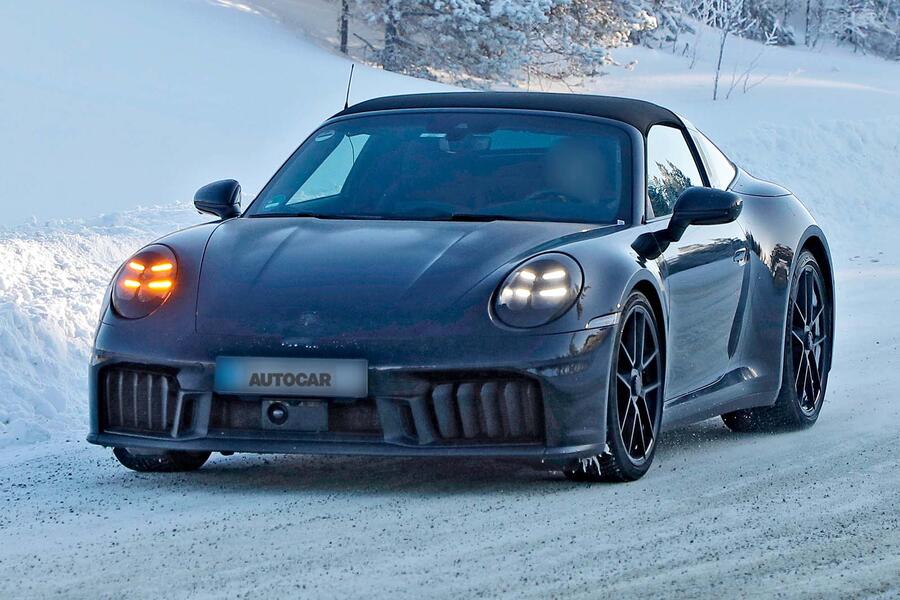
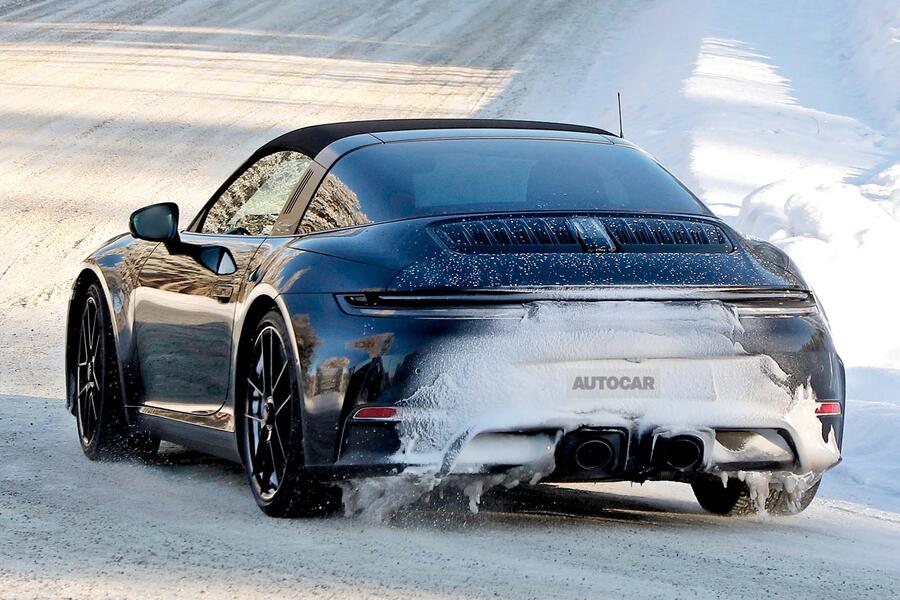
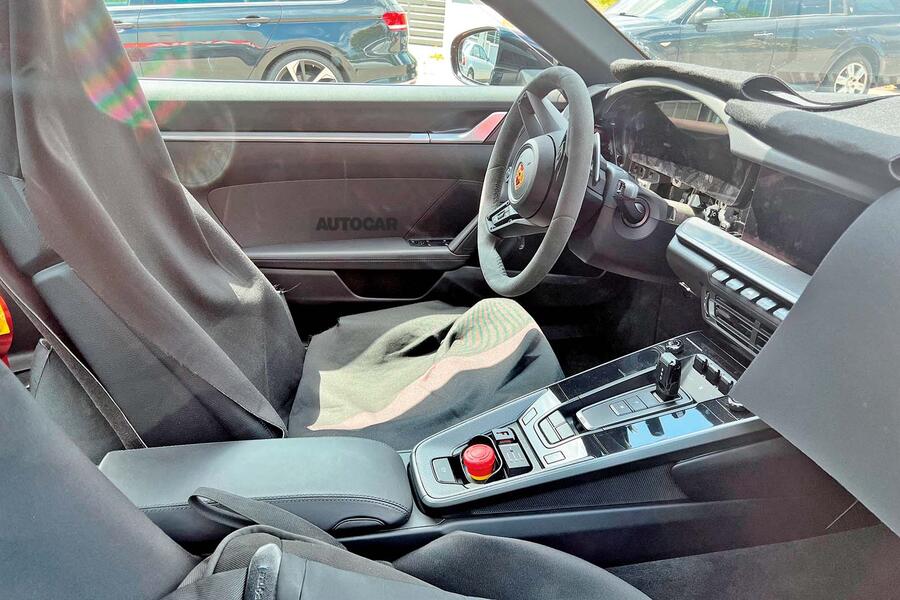






Join the debate
Add your comment
The precise Nurburgring lap time that Porsche references is for the 992.1 Carrera GTS driven at the conclusion of development by Jorg Bergmeister. This therefore tells us that the 992.2 GTS model will be the first 911 to adopt the hybrid drive system.
It therefore appears likely that the S and other derivates will remain as 3 litre turbocharged models, whilst the GTS will adopt the 4 litre non-turbcharged engine originally developed for the 718 GTS models.
Agreed, it does appear to be the GTS time, its about 5 seconds under what a Carrera S did.
The opening paragrah highlights just how competant the 992.1 Carrera really is, being only 8 second slower than the Turbo S over nearly 13 miles, and now its going to be just as quick. That explains why when you spend time at the Porsche Driving Experiences here in the USA, the professional drivers that ride alongside you all say the base Carrera is all the car you need for the road, and some. As a measure of how good this 992.1 is, the Carrera S is quicker that the 991.2 GT3 around both the Atlanta and LA tracks. This move to hybrid is because Porsche has pretty much maxed out what the ICE engine can do and meet regulations, the only way to 'keep up with the Jones's was to adopt hybrid assist'.
Every time I see a Porsche Taycan, I think two things: 1. It's fantastic. 2. Why can't they make a smaller, 2 door coupe version? That's what's missing in the current Porsche line-up. 911's are great, but the Taycan has made them look very 20th Century.
Good news for you Porsche is building a smaller, 2 door coupe version, its called the Cayman/Boxster EV and they will be available in 2025. If you want one in 2025 place an order now, leave a small deposit and you will not be disappointed. If for any reason you don't like it if you will be able to sell it on for what you paid or more, so nothing to lose.